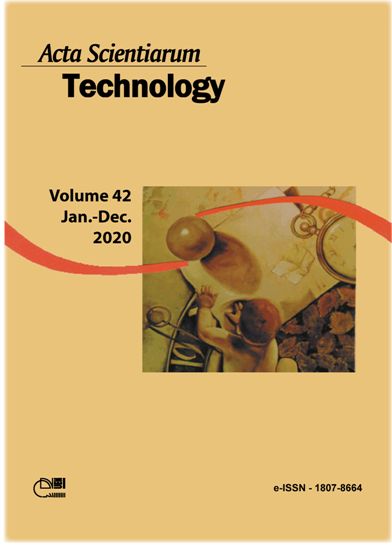Unorganized machines and linear multivariate regression model applied to atmospheric pollutant forecasting
DOI:
https://doi.org/10.4025/actascitechnol.v42i1.48203Palavras-chave:
forecasting; air pollutants; linear multivariate; regression models; echo state networks; extreme learning machines.Resumo
Air pollution is a relevant issue studied worldwide, and its prediction is important for social and economic management. Linear multivariate regression models (LMR) and artificial neural networks (ANN) are widely applied to forecasting concentrations of pollutants. However, unorganized machines are scarcely used. The present investigation proposes the application of unorganized machines (echo state networks - ESN and extreme learning machines - ELM) to forecast hourly concentrations of particulate matter with the aerodynamic diameter up to 10 µm (PM10), carbon monoxide (CO), and ozone (O3) at the metropolitan region of Recife, Pernambuco, Brazil. The results were compared with multilayer perceptron neural network (MLP) and LMR. The prediction was made using or not meteorological variables (wind speed, temperature, and relative humidity) as input data. The results showed that the inclusion of these variables could increase the general performance of the models considering one step ahead forecasting horizons. Also, the ELM and the LMR achieved the best overall results.
Downloads
Downloads
Publicado
Como Citar
Edição
Seção
Licença
DECLARAÇíO DE ORIGINALIDADE E DIREITOS AUTORAIS
Declaro que o presente artigo é original, não tendo sido submetido í publicação em qualquer outro periódico nacional ou internacional, quer seja em parte ou em sua totalidade.
Os direitos autorais pertencem exclusivamente aos autores. Os direitos de licenciamento utilizados pelo periódico é a licença Creative Commons Attribution 4.0 (CC BY 4.0): são permitidos o compartilhamento (cópia e distribuição do material em qualqer meio ou formato) e adaptação (remix, transformação e criação de material a partir do conteúdo assim licenciado para quaisquer fins, inclusive comerciais.
Recomenda-se a leitura desse link para maiores informações sobre o tema: fornecimento de créditos e referências de forma correta, entre outros detalhes cruciais para uso adequado do material licenciado.



















